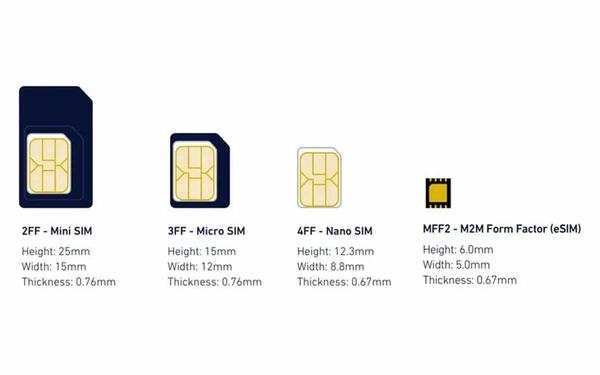The SIM cards, the small chips that we insert into our phone to make it functional and benefit from our package, are getting smaller and smaller! About 2.5cm long, over the years, they have become micro and then Nano and are now only a small centimetre. Next step: complete disappearance!
In 2020, it is now possible to own an eSIM, i.e. a virtual SIM card. In particular, this operation has been implemented by SFR since 14 January, for a service fee of 10 euros at the time of installation. So, a big question arises: should your SIM card be replaced by an eSIM?
What is an eSIM?
ESIM is a virtual "SIM card". This means that when a new mobile phone is purchased, it will no longer be necessary to insert the small card into the device, but simply to download the data directly to the phone. It's not more complicated than that.
La procédure pour en obtenir une est d'ailleurs très simple. Avec SFR, il suffit simplement de se rendre sur son Espace Client ou sur l'application SFR & Moi et opter pour la carte SIM virtuelle dans Commander une carte SIM. L'eSIM se matérialisera ensuite par un QR code envoyé par mail qu'il n'y aura qu'à scanner avec le smartphone sur lequel on désire l'installer.
Jack’s an unashamed mobile photographer. A #ShotOniPhone photographer at that. @PhotoJack has 40 years in photogr… https://t.co/keKOtyamyK
— Jon 😎📱🎬⭐️ Thu Dec 10 12:31:02 +0000 2020
Which smartphones are compatible with eSIM?
Attention, however, not all smartphones are yet compatible with eSIM! For the time being, only the latest models have access to it. This mainly concerns the latest generations of iPhone and the Samsung Galaxy fold. Find the list of smartphones that are compatible with eSIM:

In the long run, it is therefore to be expected that all future smartphones will be able to host a virtual SIM card. This should be the case for the next phones that will arrive on the market like the Samsung Galaxy S20 or the Huawei P40 Pro.
Why adopt eSIM?
We have a number of arguments to make to you.
The virtual SIM card also increases all your possibilities tenfold. It simplifies the use of double SIM for all those who need it. But above all, it allows you to connect several connected objects to one and the same eSIM. If, for the time being, this possibility applies only to connected watches, it is to be expected that other objects will join the game in the coming years, such as tablets and cars. And as far as we can go, why not also the TVs and the connected glasses!
Finally, the last argument we have to share with you is ecological. It is estimated that there are just under 3 billion smartphone users worldwide. Which involves at least as many SIM cards and therefore probably more than 3 billion small pieces of plastic that walk around our phones and that we throw away when we no longer use them. To opt for eSIM is to reduce this significant figure and pollute Mother nature a little less at the same time.
Sur le même sujetSo, what are you waiting for to switch to eSIM?
Medical deserts, public services: what assessment of Macron on rurality?
What is the best Oppo smartphone to choose?
The best phones in 2021 for photos and video
Good Plan: the recap of 4G packages on sale